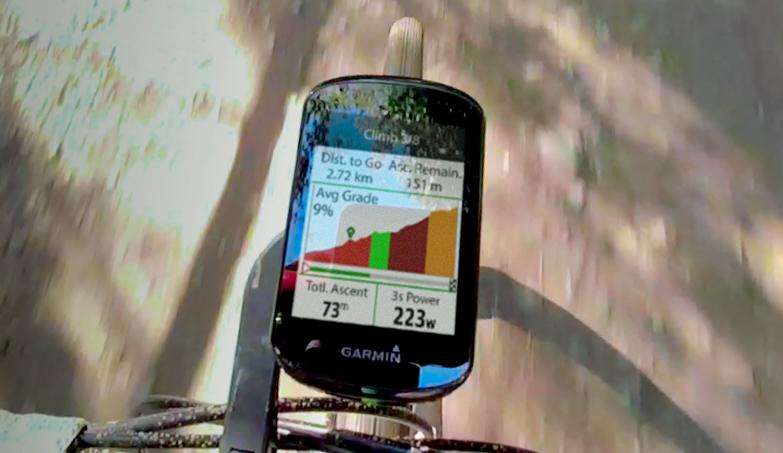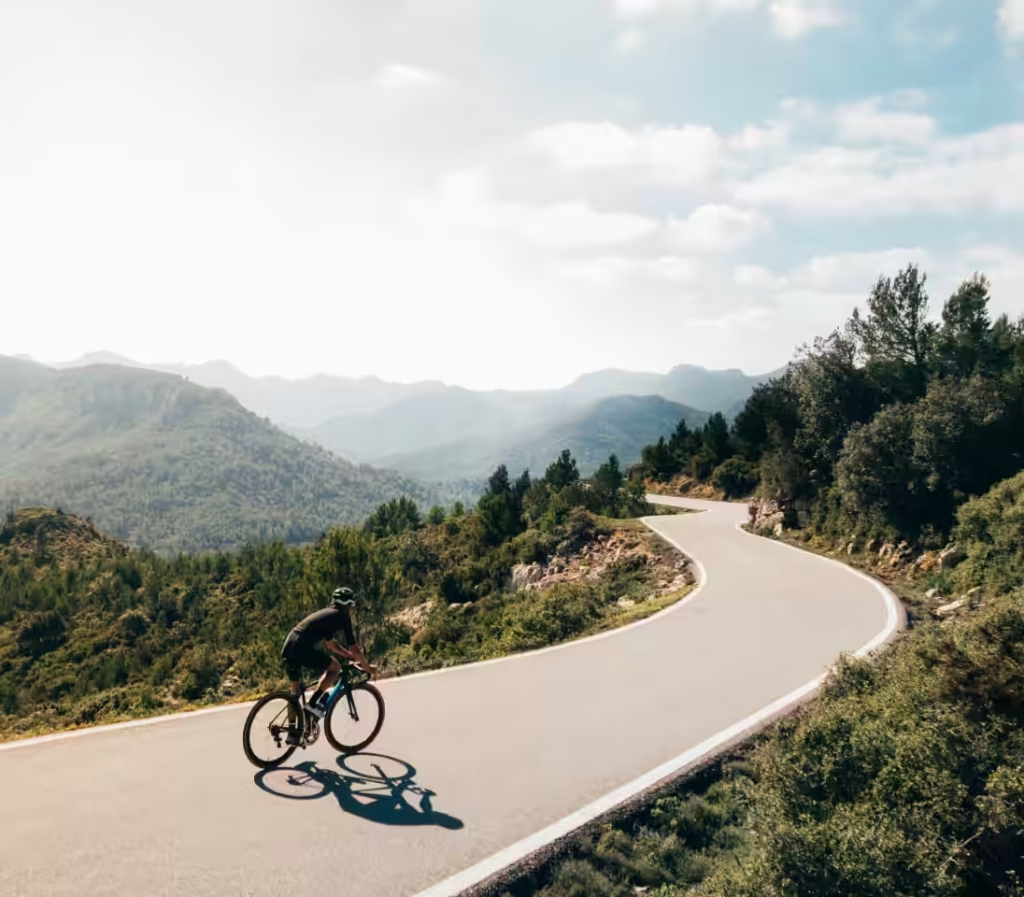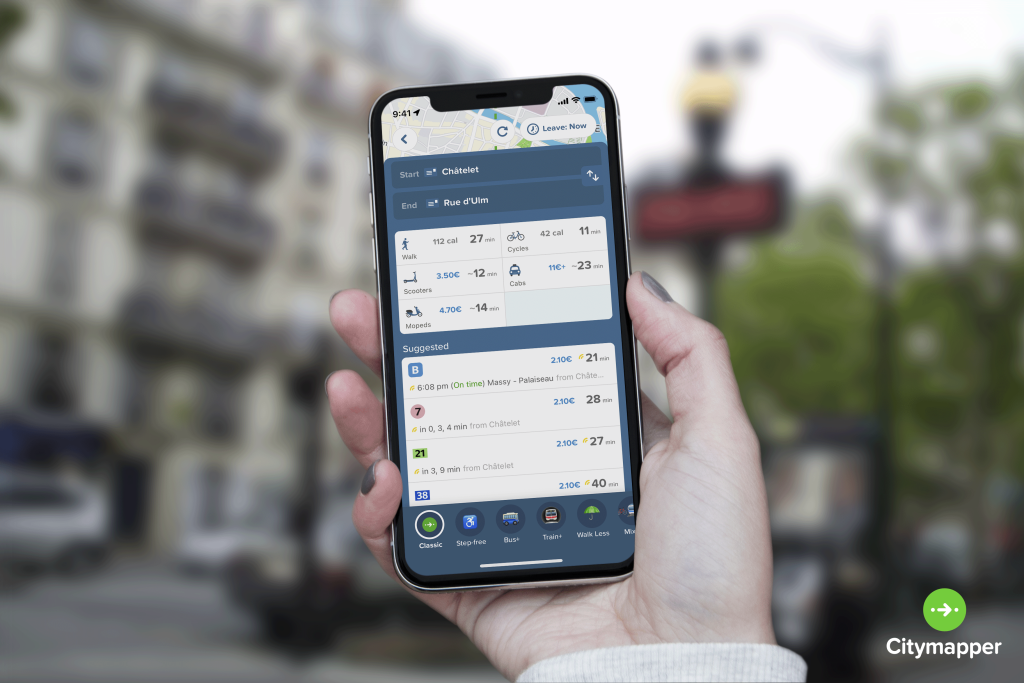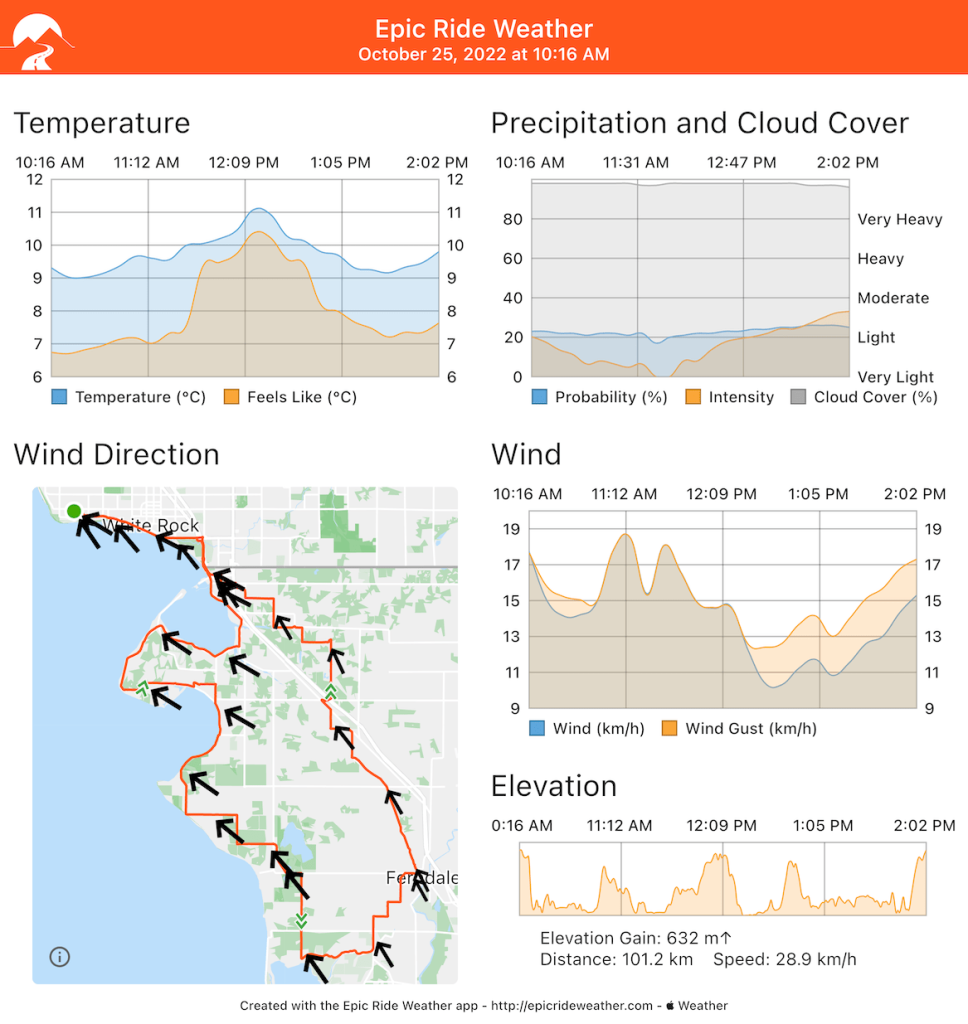Planning a cycling trip through Europe? With the right digital navigation tools, you can explore beautiful landscapes, charming villages, and historic cities easily and confidently. At Port Velo, we want to help cyclists make the most of their European tours. Let’s look at the top 12 digital navigation tools that will make your cycling trip even better, turning your journey into an unforgettable experience across Europe’s diverse terrains and cultures.
Key Takeaways: Top 12 Digital Navigation for European Bike Tours
- Smartphone apps and GPS devices are essential for modern European bike tours
- Offline map functionality is crucial for areas with limited internet connectivity
- Look for apps with detailed route information and points of interest
- Choose tools that integrate with local transportation and accommodation options
- Select navigation apps that cater to your specific cycling style and tour preferences
- Safety apps can provide emergency service information and location sharing
- Cultural apps can enhance your journey with historical and regional information
- Consider apps that offer offline access to cultural information for learning on the go
- Some apps feature augmented reality for exploring historical sites
- Audio guides allow for hands-free learning while cycling

1. Smartphone Apps: Your Pocket-Sized Tour Guide
Smartphone apps have changed how we navigate during bike tours. They turn your phone into a helpful companion for your European adventure. These apps use GPS technology and are easy to use, giving you real-time directions, route suggestions, and information about what’s around you. Our European tours recommend having navigation apps but we also recommend these top cycling apps:
- Komoot: Great for finding and planning routes, with detailed terrain information and tips from other cyclists
- Strava: Track your rides, see how you’re doing, and connect with other cyclists
- Maps.me: Good for offline mapping, so you can stay on course even when there’s no internet
These apps help you track where you are, plan routes, and find interesting places along the way. They will show you how hilly the route is, what kind of roads you’ll be on, and include photos and reviews from other cyclists. Remember to download offline maps before you start, as you might not have internet in some rural or mountainous areas of Europe.
2. Dedicated GPS Devices: Reliable in Remote Areas
While smartphones are useful, dedicated GPS devices are super reliable, especially when cycling in remote parts of Europe. These devices are made specifically for outdoor navigation and are often essential for cyclists and adventure lovers. They can handle different weather conditions, from misty Irish hills to sunny Spanish roads, and usually have longer battery life and are tougher than smartphones.

Top picks for dedicated cycling GPS devices include:
- Garmin Edge series: Offers different models for various cycling needs
- Wahoo ELEMNT ROAM: Known for being easy to use and having a long battery life
- Karoo K3: The biggest draw is the screen. It is very easy to use and offers a clear view of your data
These devices often come with maps of Europe already loaded and can guide you through challenging routes with turn-by-turn directions. Many also let friends and family follow your progress and can connect with other sensors to track how you’re doing. They’re tough enough to handle drops, rain, and extreme temperatures, making them great for multi-day tours across different European landscapes.
3. Online Route Planners: Pre-Trip Preparation

Before you start your European cycling adventure, online route planners can help you map out your journey. These tools let you plan your routes in detail, considering things like hills, road types, interesting places to see, and weather conditions. By using these planners, you can create a trip that matches your fitness level, interests, and how much time you have.
Good online route planning platforms include:
- RideWithGPS: Shows detailed hill information, gives turn-by-turn directions, and lets you share routes with other cyclists
- Bikemap: Has lots of routes created by users and lets you easily customize your journey
Use these tools to plan your Italian cycling holiday or other European holidays. They often work with various GPS devices and smartphone apps, so you can easily transfer your planned routes to your navigation device. Many of these platforms also have community features where you can find routes created by local cycling fans, giving you insider knowledge on the best paths, views, and cyclist-friendly places along the way.
4. Offline Maps: Navigating Without Internet
When cycling through remote European areas, from Portugal’s rocky coasts to Germany’s dense forests, offline maps are really important. They help you stay on track even when there’s no cell service, which is common in rural or mountainous areas. Before your trip, it’s crucial to download offline maps for the places you’ll be cycling through.
Important things to think about for offline maps:
- Storage space on your device: Make sure you have enough room to store detailed maps of your whole route
- Regular map updates: Check for and download the latest map versions before your trip for the most up-to-date information
- Detailed topographical information: Look for maps that show hills, road types, and interesting places
Good offline mapping options:
- Google Maps offline feature: Lets you download large areas for offline use, including basic navigation
- OsmAnd: Offers very detailed map data with cycling-specific features and customizable map displays
- what3words: Provides a very precise location to navigate to or share, particularly useful in an emergency. Without phone signal, the app functions the same as when you have no data connection: you can view the location of any what3words address you enter. You can also navigate to it using compass mode.
These offline solutions help you navigate confidently even in areas where internet is spotty or non-existent. They let you explore Europe’s diverse landscapes without worrying about getting lost. Remember to update your offline maps every so often, as roads and points of interest can change over time.
5. Local Transportation Apps: Combining Different Ways to Travel
For a full European bike tour experience, think about apps that include local transportation options. These tools can be really helpful when exploring cities or if you need to cover longer distances between cycling routes. They let you easily combine cycling with public transport, giving you more flexibility and expanding what you can see on your adventure.

Useful apps for including local transport:
- Citymapper: Gives complete public transport information for big European cities, including cycling routes and bike-sharing options
- Moovit: Provides up-to-date public transport information and trip planning across many European locations
These apps can help you navigate cities during your European city explorations. They’re especially useful for planning efficient transfers between cycling routes, finding bike-friendly public transport options, and discovering local bike-sharing schemes. By using these apps in your trip planning, you can create a more flexible itinerary, allowing you to see more of Europe’s landscapes and cultures.
6. Accommodation Finders: Places to Rest on Your Journey
After a long day in the saddle, finding a good place to stay is important for rest and recovery. Digital tools can help you find bike-friendly places to stay along your route, making sure you have a comfortable place to recharge for the next day’s adventure. These apps and websites think about the special needs of cyclists, like secure bike storage and being close to cycling routes.
Things to look for in accommodation apps:
- Bike storage options: Safe places to store your bicycle overnight
- Close to cycling routes: Places to stay located near popular cycling paths or your planned route
- Reviews from other cyclists: Insights from other bike tourists about how good the accommodation is for cyclists
- Cyclist-friendly features: Things like laundry services, bike repair tools, or packed lunch options
Recommended platforms:
- Warm Showers: A community for bike tourists and hosts, offering free accommodation and a chance to meet local cycling enthusiasts
- Booking.com (with bike-friendly filters): Lets you filter accommodations based on cycling-specific features
- Airbnb: Often provides unique stays with hosts who can give local cycling tips and might have secure bike storage
These platforms not only help you find a place to stay but can also make your overall cycling experience better by connecting you with local communities and fellow cycling fans. Remember to book in advance, especially during busy cycling seasons, to make sure you have a comfortable place to rest after each day of your European cycling adventure.
7. Weather Apps: Getting Ready for Different Weather
European weather can be unpredictable, changing a lot from the Mediterranean coast to the Alpine regions. Special weather apps help you plan your daily rides and pack the right clothes, making sure you’re ready for whatever weather you might face. Accurate weather forecasts can make the difference between an enjoyable ride and a tough one.

Important features to look for:
- Hourly forecasts: Detailed predictions for temperature, rain, and clouds throughout the day
- Wind speed and direction: Really important for cyclists, as it affects your speed and how much energy you use
- Rain radar: Real-time tracking of rain or snow, so you can change your route or timing if needed
- UV index: Important for protecting yourself from the sun, especially during long days of cycling
- Air quality information: Useful for city areas or regions that might have pollution
Top picks for weather apps:
- AccuWeather: Known for its MinuteCast feature, giving minute-by-minute rain forecasts for the next two hours
- Windy: Offers detailed wind forecasts and visualizations, particularly useful for coastal or mountain routes
- Dark Sky: Provides very local weather forecasts with an easy-to-use interface (Note: availability may be different in different regions)
- Epic Ride Weather: Provides personalised weather forecasts that take into account your speed and location, combining multiple forecasts to give you a precise projection of weather for the duration of your ride. It is compatible with Strava, Ride With GPS, Garmin, Komoot, Plotaroute, MapMyRide, Trailforks and Runkeeper.
By using these weather apps, you can make smart decisions about your daily routes, what clothes to wear, and where to take breaks. They can help you avoid unexpected storms, take advantage of tailwinds, and plan your cycling days to be as comfortable and enjoyable as possible across Europe’s varied climates.
8. Language Translation Tools: Helping You Communicate
Cycling across Europe often means encountering many languages, from Romance languages in the south to Germanic and Slavic languages as you move north and east. Digital translation tools can help you communicate effectively during your cycling tour holiday, making your interactions with locals better and enriching your overall experience.
Useful features in translation apps:
- Offline translation: Essential for areas with limited internet
- Camera translation for signs and menus: Instantly translate text through your device’s camera
- Voice translation for conversations: Help with real-time spoken communication with locals
- Phrasebooks for common cycling-related terms: Quick access to words specific to bike maintenance, directions, and accommodations
Recommended translation apps:
- Google Translate: Offers a wide range of languages and features, including offline mode and camera translation
- iTranslate: Known for its accurate translations and user-friendly interface
- DeepL: Provides detailed translations, particularly useful for more complex communications
These tools not only help in practical situations like ordering food or asking for directions but also allow you to engage more deeply with the local culture. They can help you understand historical markers, talk with local cyclists, and even help in emergency situations. By breaking down language barriers, these apps contribute to a more immersive and rewarding European cycling experience.
9. Fitness Tracking Apps: Keeping an Eye on Your Progress
For those who want to track how they’re doing during their European cycling tour, fitness apps offer valuable insights into your physical achievements and progress. These tools can help you set and reach personal goals, monitor your health, and create a detailed record of your journey across Europe’s diverse terrains.
Key things to track:
- Distance covered: Daily and total distances to see your progress
- Elevation gained: Important for understanding how tough your routes are
- Calories burned: Helps in managing your food and energy intake
- Heart rate (with compatible devices): Monitors how hard you’re working and how your fitness is improving
- Speed and pace: Tracks how you’re doing across different terrains and conditions
- Route maps: Creates a visual record of your journey
Popular choices for fitness tracking:
- Strava: Offers detailed cycling metrics and a social platform to share achievements
- Apple Health (for iOS users): Combines data from various sources for a complete health view
- Google Fit (for Android users): Provides a simple interface for tracking basic fitness metrics
- Garmin Connect: Works seamlessly with Garmin devices for detailed activity tracking
These apps not only help you monitor your physical performance but can also serve as a digital diary of your European cycling adventure. They allow you to look back on your achievements, from conquering tough Alpine passes to leisurely rides through pretty valleys. Many of these apps also let you connect with other cyclists, share your experiences, and even discover new routes recommended by fellow cyclists.
10. Social Cycling Apps: Meeting Other Riders
Make your European bike tour even better by connecting with other cyclists along the way. Social cycling apps can turn your solo journey into a community experience, giving you chances to meet local riders, join group rides, and share your adventures with cyclists around the world.
Features to consider:
- Route sharing: Discover new paths and share your favorite routes with others
- Local cycling group information: Find and join cycling clubs or informal group rides in different European locations
- Cycling event calendars: Stay informed about local races, charity rides, or cycling festivals happening during your tour
- Achievement tracking and challenges: Set personal goals or compete with others for added motivation
- Photo sharing: Document and share the scenic highlights of your European cycling adventure
Recommended platforms:
- Strava’s social features: Beyond tracking, Strava offers a big social network for cyclists
- Meetup (for finding local cycling groups): Great for discovering cycling events and groups in various European cities
- Facebook Groups: Many regions have dedicated cycling groups where you can ask for advice or find riding partners
- Cycling Forums (like CyclingUK or BikeForums): Valuable resources for route advice and connecting with experienced cyclists
- Link My Ride: Empowers cyclists of all abilities to find and connect with local cyclists all over the world, and to effortlessly plan and organise rides together.
These social tools can really improve your travelling experience. They give you the chance to get local knowledge, find hidden gems off the usual tourist paths, and create lasting connections with fellow cyclists from around the world. Whether you’re looking for a riding companion for part of your journey or seeking advice on the best cafes along your route, these social platforms can add a valuable dimension to your tour.
11. Emergency and Safety Apps: Feeling Secure on the Road
Safety should always come first when cycling in unfamiliar places, and digital tools can play a big role in keeping you safe throughout your European adventure. These apps can give you quick access to emergency services, first aid information, and location sharing abilities, helping you feel secure as you explore diverse landscapes and urban environments.
Important features for safety apps:
- Emergency service contact information: Quick access to local emergency numbers across different European countries
- First aid guides: Step-by-step instructions for handling common cycling-related injuries
- Location sharing with trusted contacts: Allows friends or family to track your journey in real-time
- Offline functionality: Ensures access to critical information even without internet
- Multi-language support: Helps communicate your needs in various European languages
Suggested safety apps:
- Red Cross First Aid: Offers comprehensive first aid guidance suitable for various emergencies
- What3Words: Provides a unique three-word address for any location, useful for precise location sharing in remote areas
- bSafe: Features include an SOS button, voice activation, and automatic location sharing
- ICE (In Case of Emergency): Stores important medical information and emergency contacts
These safety apps serve as a digital safety net, adding to your physical preparation and awareness. They can be particularly valuable when cycling through remote areas or if you face unexpected situations. Remember to get familiar with these tools before your trip and make sure your emergency contacts are up to date. While technology is helpful, it’s also important to tell someone your general plan and check in regularly during your European cycling tour.
12. Cultural and Historical Information Apps: Making Your Journey More Interesting
Make your European cycling experience even better by learning about the regions you’re traveling through. Cultural and historical information apps can turn your ride from just a physical journey into an educational experience, helping you appreciate the rich history and culture of Europe as you cycle through diverse landscapes.
Key features to look for:
- Audio guides for hands-free learning: Listen to historical stories and cultural insights while cycling
- Offline access to cultural information: Make sure you can access information even in areas with poor internet
- Augmented reality features for historical sites: See historical reconstructions or additional information when visiting landmarks
- Multilingual content: Access information in your preferred language
- Customizable tours: Create personalized cultural routes based on your interests and cycling path
Recommended apps:
- Rick Steves Audio Europe: Offers free audio tours and cultural insights for numerous European destinations
- Google Arts & Culture: Provides virtual tours of museums and historical sites along your route
- PocketGuide: Features audio guides for various European cities, often including cycling-specific tours
- Detour: Offers location-aware audio walks in select European cities, providing in-depth local stories
These apps can add another dimension to your cycling holiday, providing context to the landscapes, buildings, and communities you encounter. They allow you to learn about the stories behind medieval castles, understand the importance of ancient Roman roads you might be cycling on, or learn about local customs and traditions. By including cultural learning in your journey, you’ll return home not just fitter, but with a deeper understanding and appreciation of Europe’s diverse heritage.
Conclusion: Using Technology to Make Your Cycling Experience Better
At Port Velo, we think that digital navigation tools can really improve your European bike tour experience, turning your journey into a mix of adventure, discovery, and cultural learning. These tech tools, when used with our carefully planned cycling holidays, create the perfect blend of modern convenience and timeless exploration. They help you confidently explore new areas, from sunny coastal roads of the Mediterranean to challenging Alpine passes, while staying connected, informed, and safe.
Whether you’re taking on the tough routes of our Challenge Series or enjoying the beautiful landscapes of our Italian tours, these digital tools will help you navigate confidently, connect with local cultures, and create unforgettable memories. They give you the flexibility to change your plans as you go, discover hidden gems off the usual tourist path, and share your experiences with other cycling fans around the world.

Remember, while these digital tools are really helpful, they should add to, not replace, your sense of adventure and exploration. The real magic of a European cycling tour is in the unexpected discoveries, the challenges you overcome, and how you grow as a person along the way. Use these tools to make your journey better, but don’t forget to look up from your device and enjoy the amazing landscapes, rich cultures, and friendly people that Europe has to offer.
As you get ready for your cycling adventure, take some time to get familiar with these digital tools, but also leave room for spontaneous experiences. The perfect European bike tour balances careful planning with the freedom to embrace the unexpected. So, charge your devices, download your apps, but most importantly, open your heart to the incredible experiences waiting for you on the cycling paths of Europe. Happy cycling, and may your journey be filled with unforgettable moments and lifelong memories! Keep on exploring
Frequently Asked Questions
1. What’s the best navigation app for cycling in Europe?
While everyone likes different things, apps like Komoot and Strava are popular choices for their cycling-specific features and large user communities. Komoot is great for route planning and discovery, while Strava offers good performance tracking and social features. Think about what you need, like offline maps, detailed route information, or community engagement, when choosing the best app for your European cycling adventure.
2. Do I need internet data to use these navigation tools?
Many apps work offline, but it’s best to download maps and routes before your trip to make sure you can access them in areas with limited internet. Apps like Maps.me and OsmAnd are designed specifically for offline use, letting you navigate confidently even in remote areas. However, some features like real-time traffic updates or social sharing might need an internet connection.
3. How accurate are GPS devices for cycling tours?
Dedicated GPS devices are very accurate and reliable, especially in remote areas where smartphones might not work well. Devices like the Garmin Edge series or Wahoo ELEMNT ROAM use multiple satellite systems to provide precise location data. They’re usually accurate within 3-5 meters, which is more than enough for cycling navigation. Their toughness and long battery life make them great for multi-day tours across different European terrains.
4. Can these tools help me find bike-friendly places to stay?
Yes, apps like Warm Showers and Booking.com (with the right filters) can help you find cyclist-friendly places to stay along your route. These platforms often include details about bike storage, repair facilities, and how close they are to cycling routes. Also, community-based apps like Warm Showers connect you with local hosts who understand what cycle tourists need, potentially offering unique insights into the area you’re exploring.
5. Are there any safety things to think about when using digital navigation tools?
Always have a backup plan (like paper maps) and be aware of your surroundings. Don’t rely only on technology, especially in remote areas. Make sure your devices are fully charged and think about carrying a portable battery pack. Be careful about sharing your real-time location publicly and use privacy settings on social cycling apps. It’s also a good idea to tell someone your general route and when you expect to check in, especially when cycling in less populated areas of Europe.

Leave a Reply